The Sony Alpha A9 has quite a job on its hands. While the likes of Fujifilm's X-T2 and Sony's own Alpha A7R II have tempted some pros, particularly studio and landscape photographers, to trade-in their DSLR kit, it's been a harder challenge to get sports and action photographers to give up their Canon and Nikon gear.
[Update: Sony's just announced a new Firmware update for the Alpha A9, with version 2.00 offering a number of tweaks and refinements. For Continuous AF, performance has been improved when tracking moving subjects, while there's enhanced stability of the AF-C when zooming. There's also now the option to protect images to a custom button, as well as the ability to transfer (via FTP) all protected files at once, overall operational stability has been improved.]
Rather than being cosseted in a comfy camera bag, the gear of those action photographers is going to get bashed about on a daily basis, while the performance demanded from their camera bodies means we haven't yet seen a mirrorless rival to the likes of Canon's EOS-1D X Mark II and the Nikon D5.
Until now. The new Alpha A9 from Sony has those two speed merchants of the camera world firmly in its sights. So will it fall at the first hurdle, or can it give its rivals a run for their money?
Features
- Full-frame stacked CMOS sensor, 24.2MP
- 3,686K-dot electronic viewfinder with 120fps refresh rate
- 3.0-inch tilt-angle touchscreen, 1,440,000 dots
The key piece of tech at the heart of the Alpha A9, and one that's had a knock-on effect on the performance of other components, is the 24.2MP full-frame stacked CMOS sensor.
While it has substantially fewer pixels than the 42.2MP Alpha A7R II, it does offer a slight resolution advantage over the 20-odd megapixels of the Canon 1D X Mark II and Nikon D5, but it's the architecture of the chip that's the key element here.
The stacked design means the integrated DRAM memory modules, a high-speed processing circuit and the BIONZ X image processing engine are all lined up behind the image sensor.
This design has allowed Sony to push the data through the sensor, not around it, resulting in a a sensor that reads data 20 times faster than would otherwise be possible, enabling the Alpha A9 to shoot at a blistering 20fps for 241 raw files or 362 JPEG images.
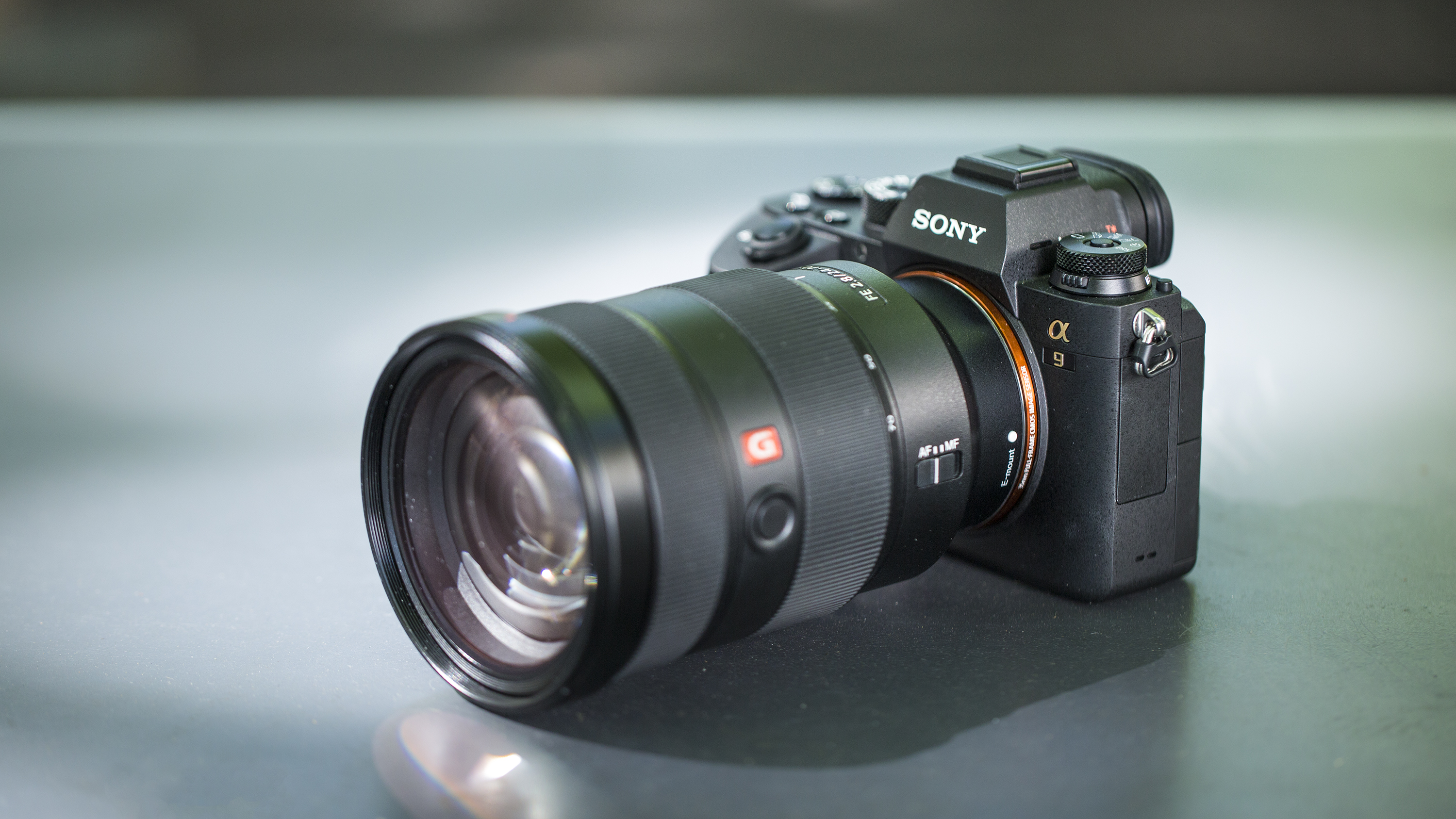
How does that compare to the EOS-1D X Mark II and Nikon D5? Very well in fact, comfortably beating both the EOS-1D X Mark II's 170 raw files at 14fps and the D5's 200 raw files at 12fps – although if you're planning to hold down the shutter for that long you might want to re-evaluate your technique.
The stacked sensor design also means the Alpha A9 and can perform an impressive 60 AF/AE tracking calculations per second (we'll get onto the nuts and bolts of the AF shortly).
Designing the sensor this way doesn't just have performance benefits – it should also deliver better noise performance, thanks to the light-gathering elements of the photosites (pixels to you and I) being closer to the surface of the sensor.
The Alpha A9 features a broad native ISO range of 100-51,200, and this can be expanded to 50-204,800. That said, for those who shoot regularly in low light, the likes of the D5 offer an extra four stops on the A9 here, with an expanded ISO ceiling equivalent to 3,280,000.
We've always liked the large electronic viewfinder on the Alpha A7R II, but the EVF on the A9 is bigger and better.
With approximately 3,686,000 dots, the all-new, high-luminance Quad-VGA OLED Tru-Finder viewfinder is the highest-resolution viewfinder Sony has ever incorporated in a camera. It boasts 0.78x magnification, a 120fps refresh rate, and a Zeiss T* coating to greatly reduce reflections, as well as a fluorine coating on the outer lens that repels dirt.
Thanks to the electronic shutter, which promises to be both vibration-free and completely silent (with a maximum shutter speed of 1/32,000 sec), there's no horrible viewfinder blackout even at 20fps (though the refresh rate of the EVF does drop to 60fps).
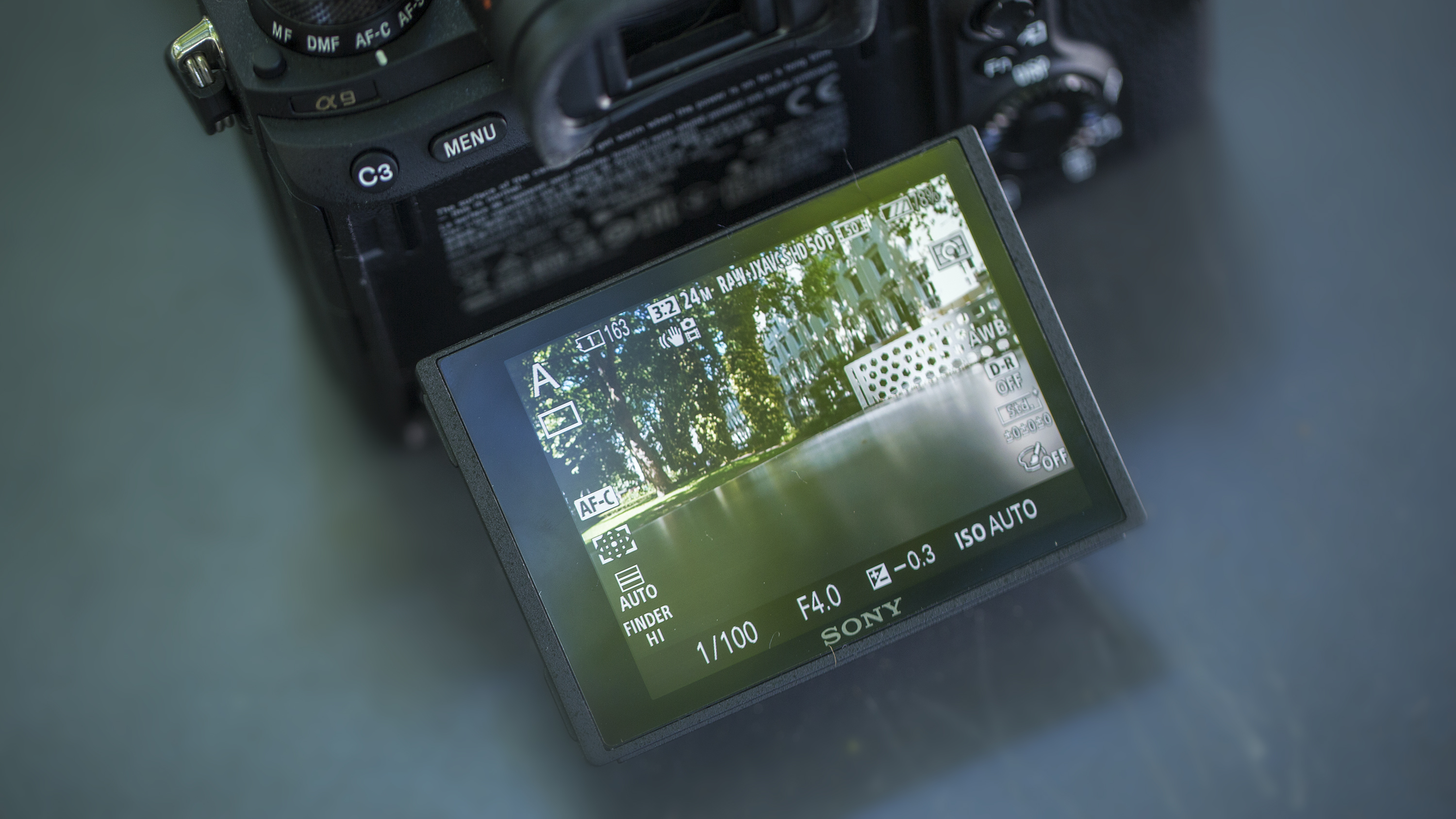
As well as the EVF, there's a 3.0-inch tilt-angle touchscreen with a solid, if not ground-breaking, resolution of 1,440,000 dots (though it's a modest boost over the 1.23m dots of the A7R II's).
The Sony Alpha A9 is equipped with an innovative 5-axis image stabilization system that provides a shutter speed advantage of five stops.
As you'd expect for Sony's mirrorless flagship camera, video is well catered for. For a start, there's 4K (3840 x 2160p) video recording across the full width of the full-frame image sensor. When shooting in this format, the camera uses full pixel readout without pixel binning to collect 6K of information, oversampling it to produce high-quality 4K footage. Recording is also available in Super 35mm size.
Additionally, the Alpha A9 can record Full HD at 120fps at up to 100Mbps, which allows footage to be reviewed and eventually edited into 4x or 5x slow-motion video files in Full HD resolution.
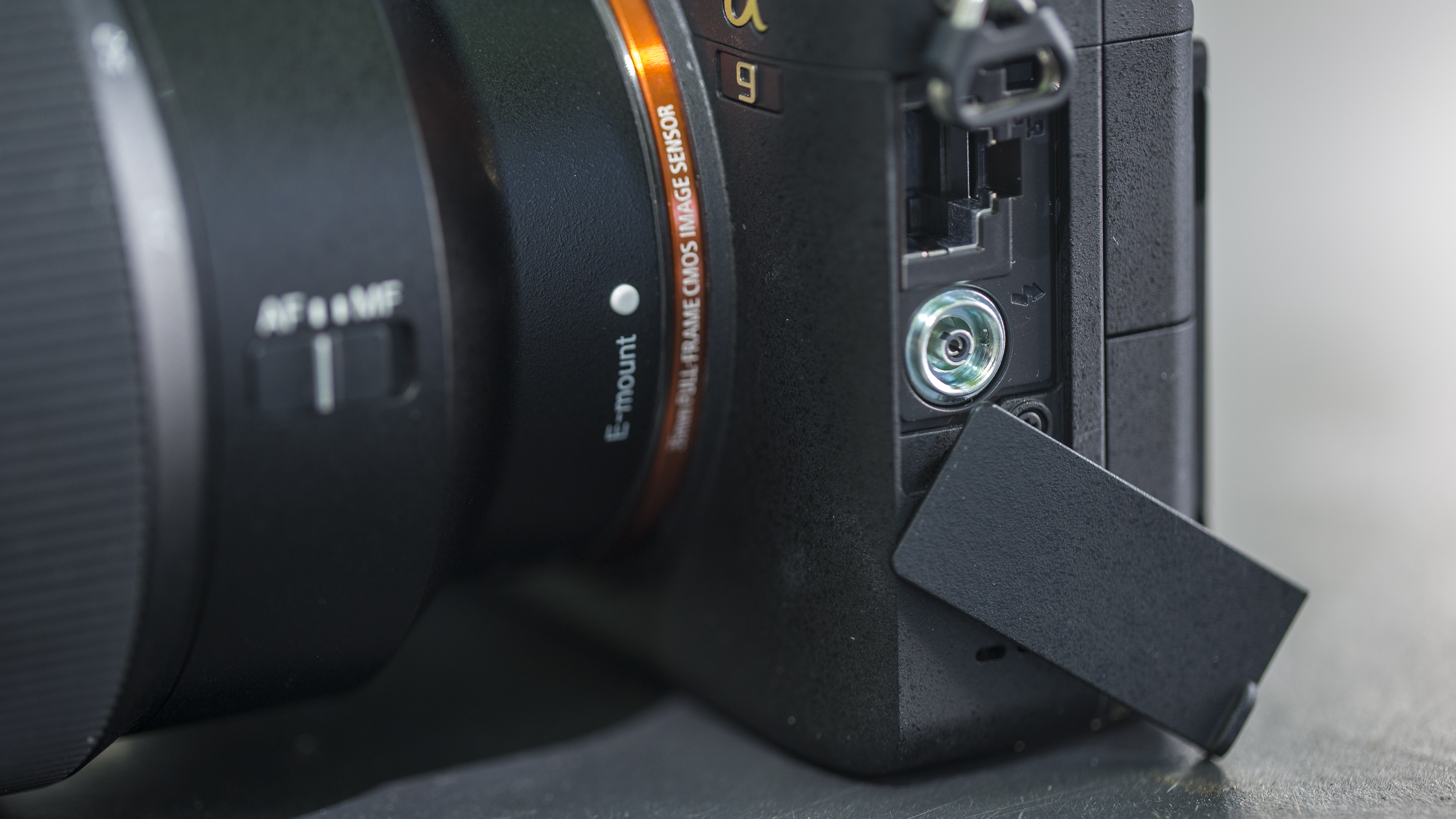
The Alpha A9 benefits from two SD card slots, but it's perhaps slightly disappointing to see that Sony has opted to give only one slot the faster UHS-II media support. In some ways it's a bit of a surprise to see the A9 forego the even faster XQD card format (especially as Sony was instrumental in its development) that both the Nikon D5 and D500 support.
As well as having the usual Wi-Fi, NFC and Bluetooth credentials, the A9 features a flash sync socket (something that was missing from the more studio-focused Alpha A7R II) and Ethernet port, underlining Sony's view that it sees the Alpha A9 as a camera that's going to muscle its way pitch-side, where speedy transfer of images is key.
Build and handling
- Magnesium alloy construction
- Weather resistant
- Weighs 673g
While the likes of the Canon EOS-1D X Mark II and Nikon D5 are probably some of the bulkiest and heaviest cameras you're likely to pick up this side of a medium format model, the Sony Alpha A9 is noticeably more compact.
It follows a similar design aesthetic to Sony's Alpha 7-series full-frame mirrorless cameras, but the A9 is just that bit chunkier, at 63mm versus 60.3mm.

One of the most obvious differences between the Alpha A9 and its pro-spec DSLR rivals is the lack of an incorporated vertical grip; whether this is a good or a bad thing will depend on your personal preference.
The hand grip itself is a decent size and pretty comfy, but your little finger will overhang the bottom of the camera. An optional GPX1EM grip extension is available, as well as a VGC3EM battery grip.
On its own, the Alpha A9 balances nicely with lenses like Sony's 24-70mm f/2.8, but it feels very front-heavy when a 70-200mm f/2.8 is attached – the VGC3EM battery grip will certainly help on this score.
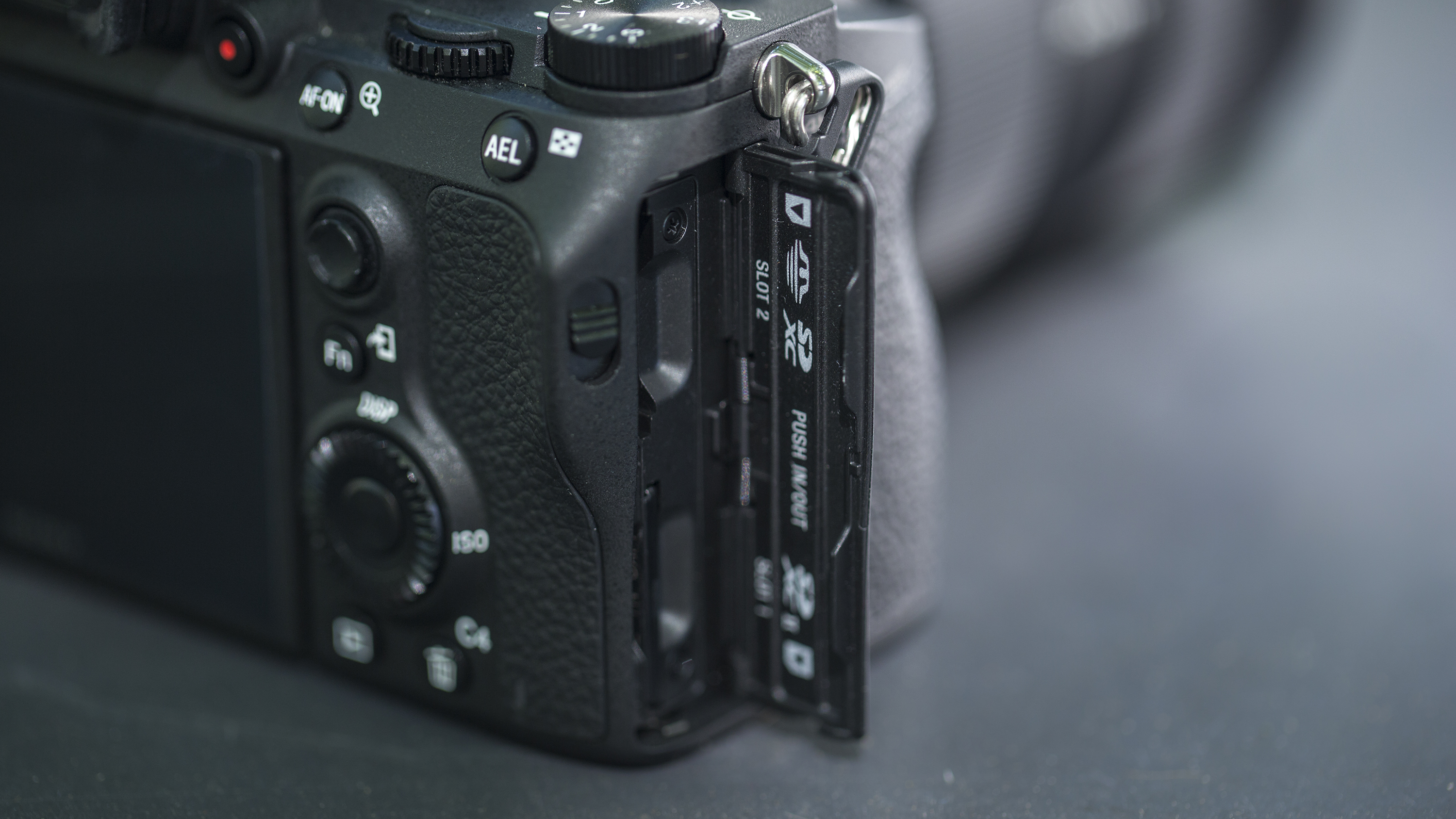
Appropriately enough for a camera that has designs on being a tool for jobbing pros, the Sony Alpha A9 is based around a durable magnesium alloy body that's also weather-resistant. That said, looking closely at the various doors dotted round the body of the Alpha A9 there don't appear to be any signs of rubber seals to protect the camera from the elements – we'd perhaps be a little nervous, then, if we were sat on the sidelines of a sports pitch in the rain with the Alpha A9, which we wouldn't be if we were shooting with a 1D X Mark II or D5.
In the past we've felt that Alpha (and some Cyber-shot) cameras have been held back a little by their overly complex procedures for changing key settings, and while the overall design of the Alpha A9 follows previous models in the line-up, there have been a number of revisions to the handling.
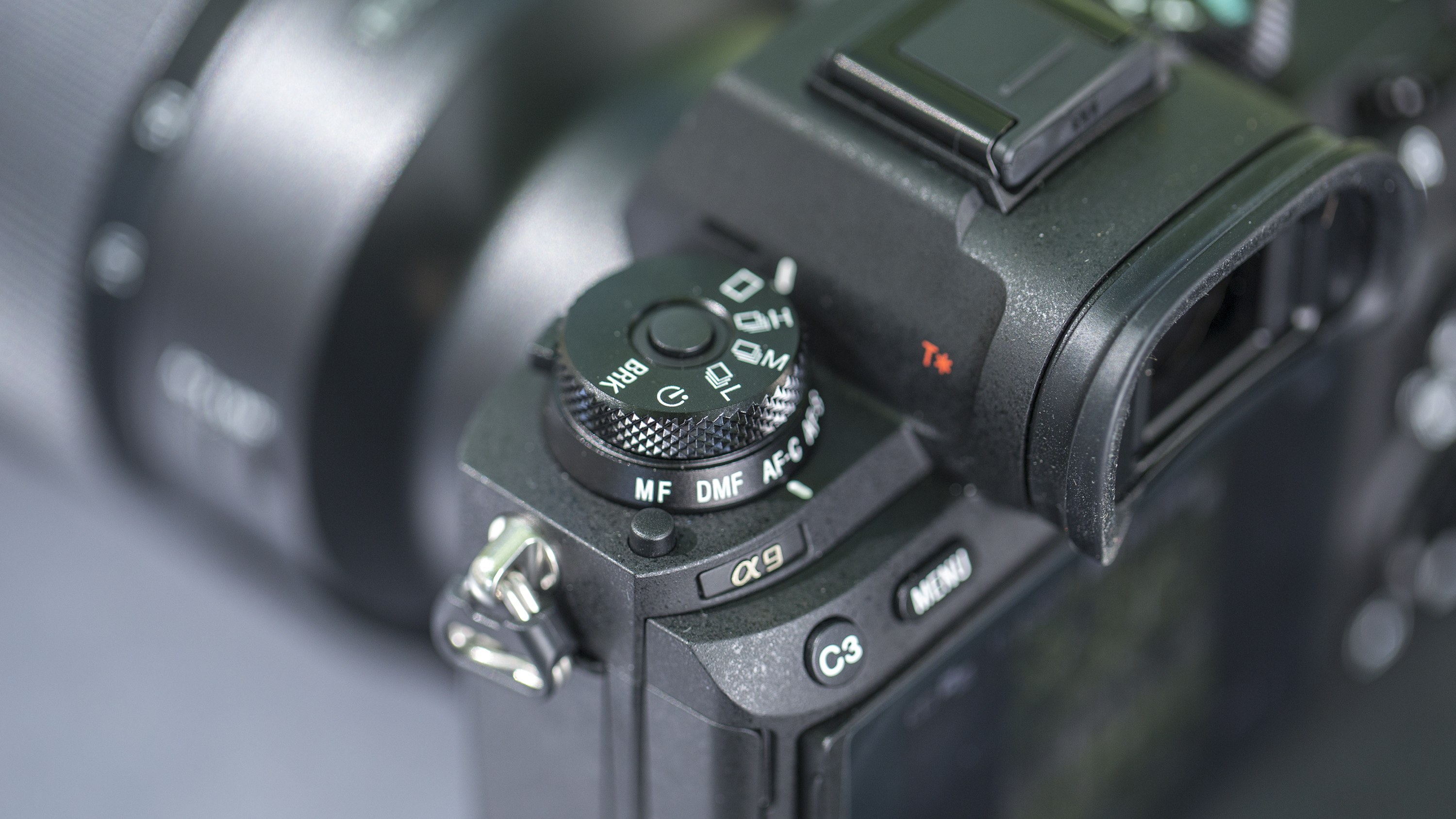
Starting with the top plate, and to the left of the viewfinder there's now a dedicated control for the Alpha A9's drive modes, with a focus mode selector round the collar to boot.
To the right of the viewfinder is the mode dial, which includes an 'Auto' mode –something we wouldn't expect to see on a pro-orientated camera. One slight annoyance with both dials is the locking mechanism. You have to press down on the central button to rotate the dial, which is a bit of a faff if the camera's held up to your eye; on the Fujifilm X-T2, for example, you can either set the dials to rotate freely, or lock them so that you have to press before you can rotate.
Another slight issue is the positioning of the front command dial. Because the grip is that bit larger than on the Alpha A7R II, your index finger doesn't fall naturally on it – it requires a bit more of a stretch to get to it. This may sound a little nit-picky, but believe us when we say that after a day of shooting you'll wish it was positioned a bit closer to the shutter button.
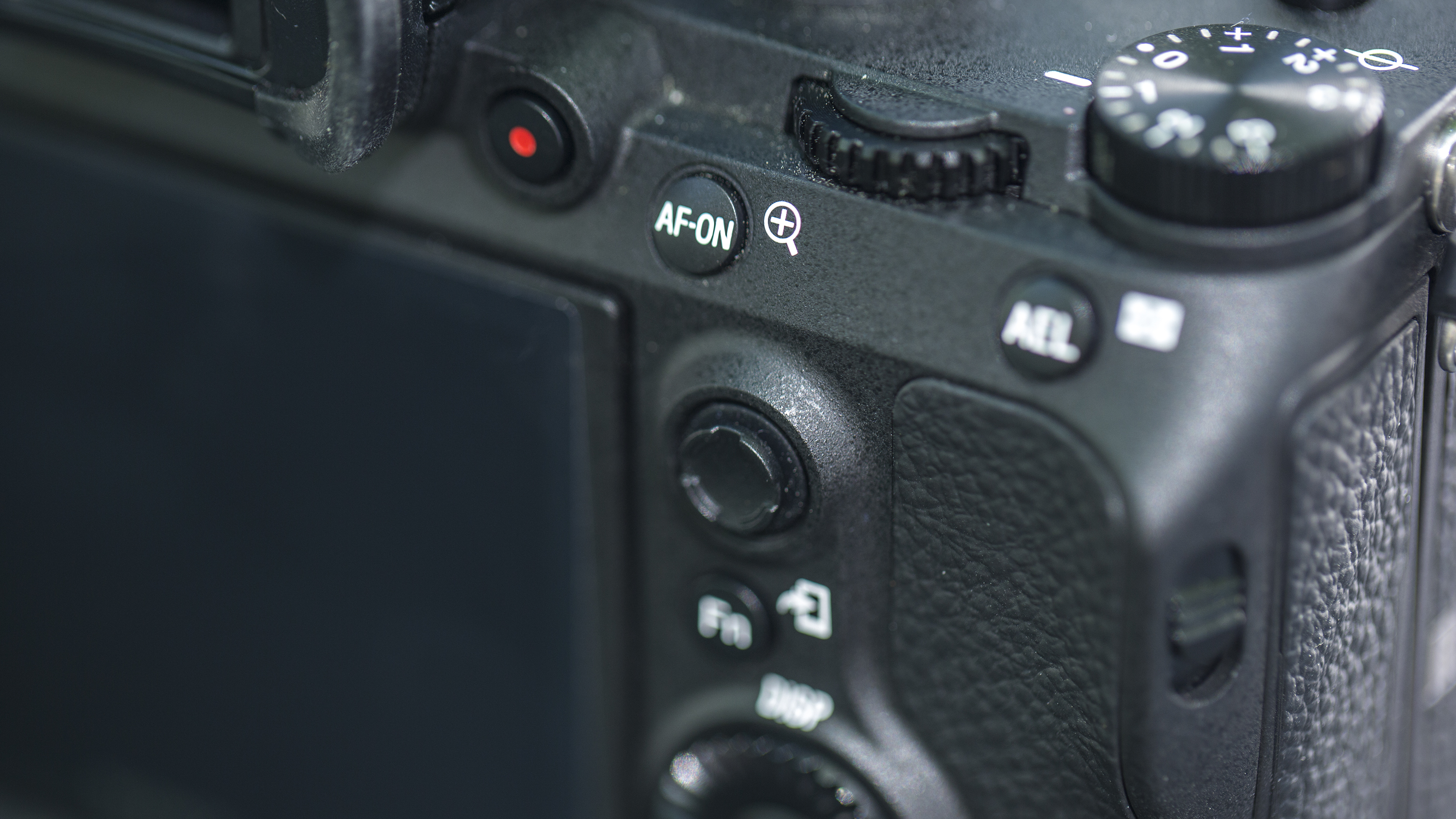
Round the back, the most obvious difference from the Alpha A7R II is the very welcome arrival of a dedicated joystick control. Primarily for AF point selection, this can also be used to navigate the camera's menu system.
There's also a proper AF-On button here – a must for many sports and action photographers – while the video record button moves to a more sensible spot just next to the viewfinder.
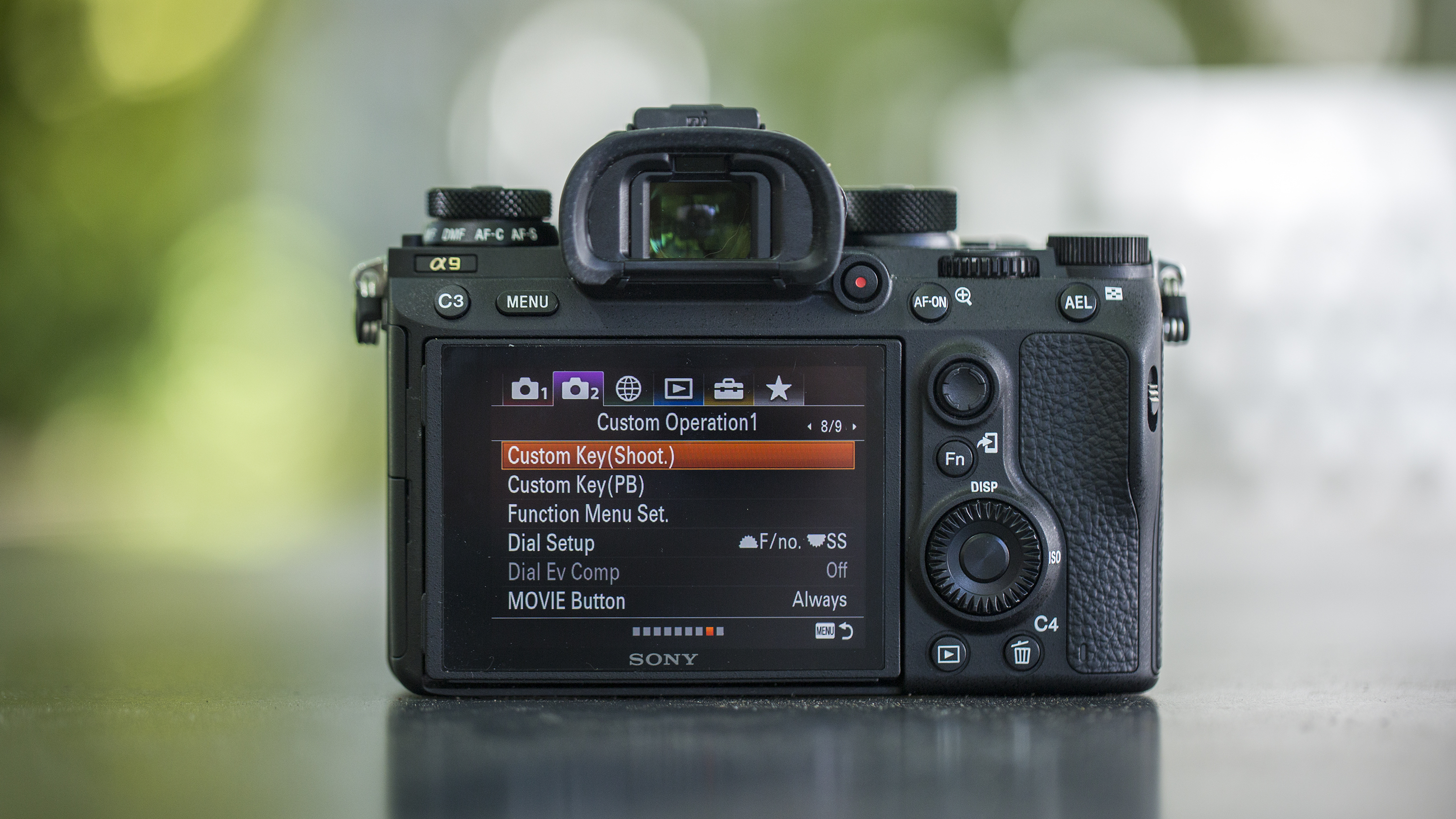
We've always been impressed by the customization options on Alpha cameras, and the Sony Alpha A9 is no different. Pretty much every button or control can be reprogrammed, with some controls, like the dedicated custom buttons, offering the choice of a staggering 69 settings. The default setup makes a good starting point, but it's worth experimenting to find your optimum configuration.
To say the menu is comprehensive is an understatement – the first shooting sub-category has 13 pages to trawl through, while movie settings are still tucked away in the second shooting sub-category. The arrival of the joystick speeds navigation up, but it's a shame the touchscreen interface doesn't allow you to quickly swipe through pages of menus.
The touchscreen itself is actually pretty limited – you can only use it to select an AF area when shooting, and when reviewing images you can double-tap the screen to quickly zoom, then tap and drag to move round the image. If you think you can swipe through images though, you can think again.
Autofocus
- 693-point AF
- 93% coverage
- Enhanced Eye-AF
Sony's not mucking around with the AF system inside the Alpha A9, showering it with a staggering 693 phase-detect AF points that cover 93% of the frame – something even the likes of the Canon EOS-1D X Mark II and Nikon D5 will struggle to match.
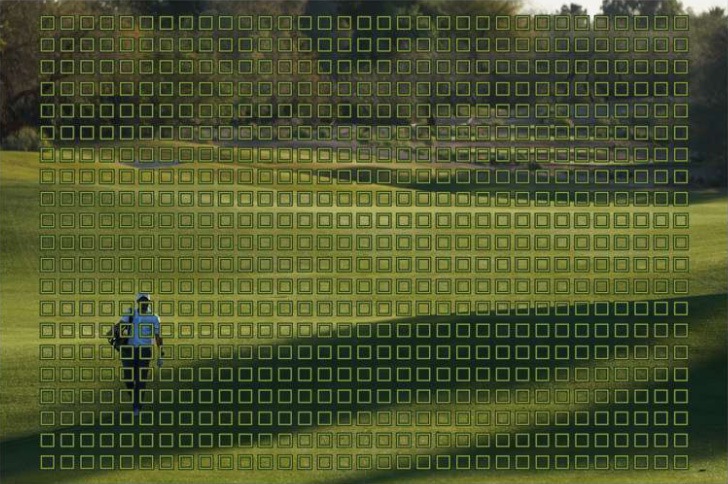
As you'd expect, there's a plethora of autofocus settings available depending on what you're shooting. For general shooting, and to keep things as simple as possible, either the Wide or Zone modes will take care of much of the decision making for you, while Center mode uses the central AF point.
Not everything you want to focus on will be slap-bang in the center of the frame though, so there’s also a Flexible Spot mode (with the choice of three AF area sizes) that enables you to use the joystick to position the focus area pretty much anywhere in the frame. If you're struggling to focus there's also Expand Flexible Spot mode, which utilizes additional AF points to assist with focusing.
Flick the AF mode to AF-C and things really get interesting. You've got the same focusing area options as you have when shooting in the Alpha A9's AF-S focusing mode, but with the addition of a Lock-on setting.
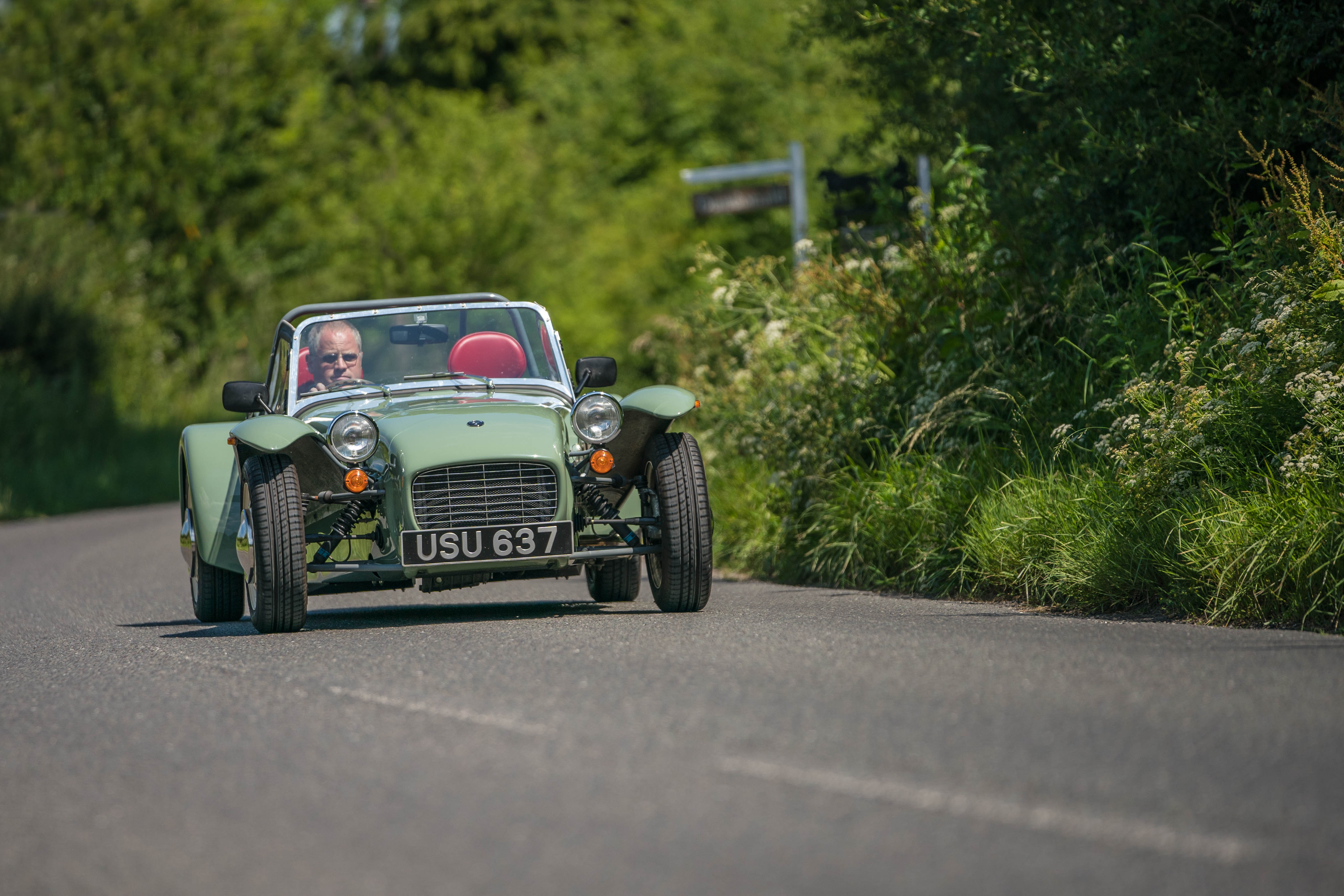
Half-press the shutter button (or preferably use the AF-On button instead), and with your subject selected the AF will instantly snap into focus, while a dizzying array of AF points will light up the viewfinder as it tracks your subject round the frame – thanks to the architecture of the sensor, the Alpha A9 is making 60 tracking calculations per second.
We found that if you want to be really precise with what the camera tracks (especially if your subject is far off in the distance), then Lock-on: Flexible Spot M is the best option, as this allows you to select the specific part of the frame where the subject you want to track is. That said, if you're shooting subjects that fill the frame and make predictable movements, then Zone mode can be very effective.

The Alpha A9 is also the first Sony camera to feature customizable autofocus tracking sensitivity. If you haven't come across this before, it lets you tell the camera how quickly you want the camera to refocus should a distraction obstruct your view of your tracked subject.
In some instances you might want the camera to hold focus (for instance if your subject has disappeared briefly behind an obstacle) or to quickly snap on to a new subject (an opposing player has made a challenge and won the ball). The A9's sensitivity scale ranges from 1 to 5, with 1 least likely to refocus, while 5 is most likely to refocus should a new subject enter the frame.
The Alpha A9's AF performance is incredibly impressive; while it did get tripped up a couple of times, for the most part the speed and precision of the AF is outstanding.
Performance
- 20fps burst shooting
- 5-axis image stabilization
- 480-shot battery life
Raise the camera up to your eye and start rattling off bursts of shots at 20fps with no viewfinder blackout, and the Sony Alpha A9 really does feel like the product of witchcraft.
It's almost a little unnerving at first, but you quickly embrace the stunning capabilities of the camera. Helpfully, there's a subtle 'shutter' sound to reassure you that something is actually happening, though you can switch to fully silent operation via the menu if required.
If a burst rate of 20fps is overkill for what you're shooting, you also have two slower drive modes to choose from, while those looking to use a lens adapter (something that's likely given the limited range of longer focal length lenses) will see the Alpha A9's burst shooting performance cut in half to 10fps.
The viewfinder itself is excellent – the 120fps refresh rate and the clarity of the 3,686k-dot resolution combine to provide a beautifully clear and large view of what you're shooting. Whether you have a preference for this over the big and bright optical viewfinders on the A9's DSLR rivals will come down to you; optical viewfinders still have the edge in high-contrast and poorly lit scenes, but the EVF on the Alpha A9 provides a real-time look at how the camera is going to capture the scene – and you can't ignore that blackout-free burst shooting.
Battery life has been bumped up from the Alpha A7R II to deliver 480 shots, but when put up against the EOS-1D X Mark II's 1,210 shots and the D5's staggering 3,780 shots this looks a little paltry, especially if you're going to be holding the shutter down at 20fps for long periods. It goes without saying then that you're going to need spare batteries – and more than one if you're a working photographer.
Image quality
- ISO100-51,200, expandable to 50-204,800
- Good ISO performance
- +/-5 EV exposure compensation in 1/3 or 1/2 stop increments
Landscape and studio photographers should still plump for the more densely populated 42.2MP Alpha A7R II, but that's not to say the sensor inside the Sony Alpha A9 falls short – far from it.
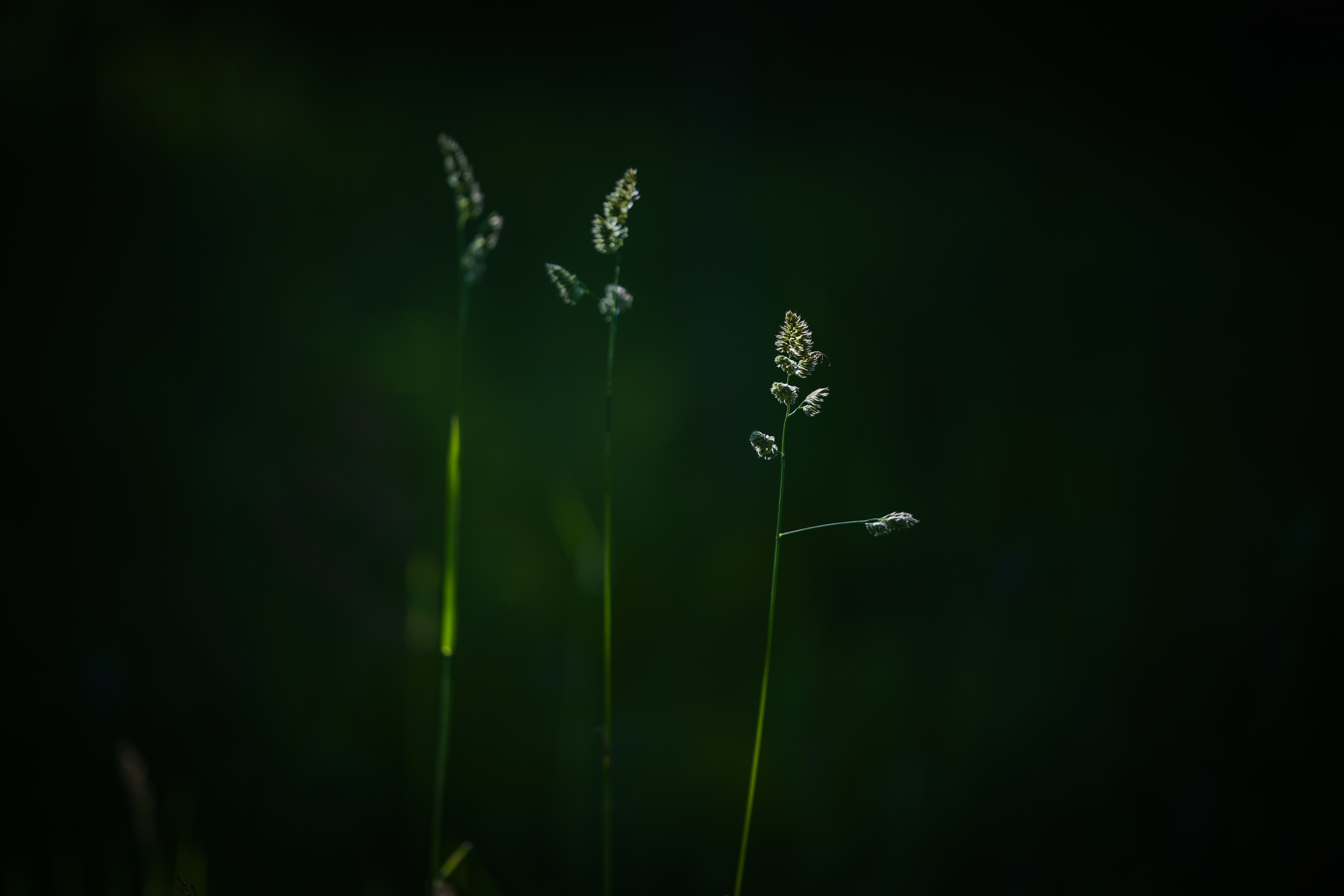
The 24MP sensor is capable of delivering images rich in detail, especially when married with some of Sony's G-Master lenses, and results compare very favorably to those from the slightly lower-resolution EOS-1D X Mark II and D5. You should have no qualms about producing sharp Super A3 prints, while A2 sized prints are a reality too.
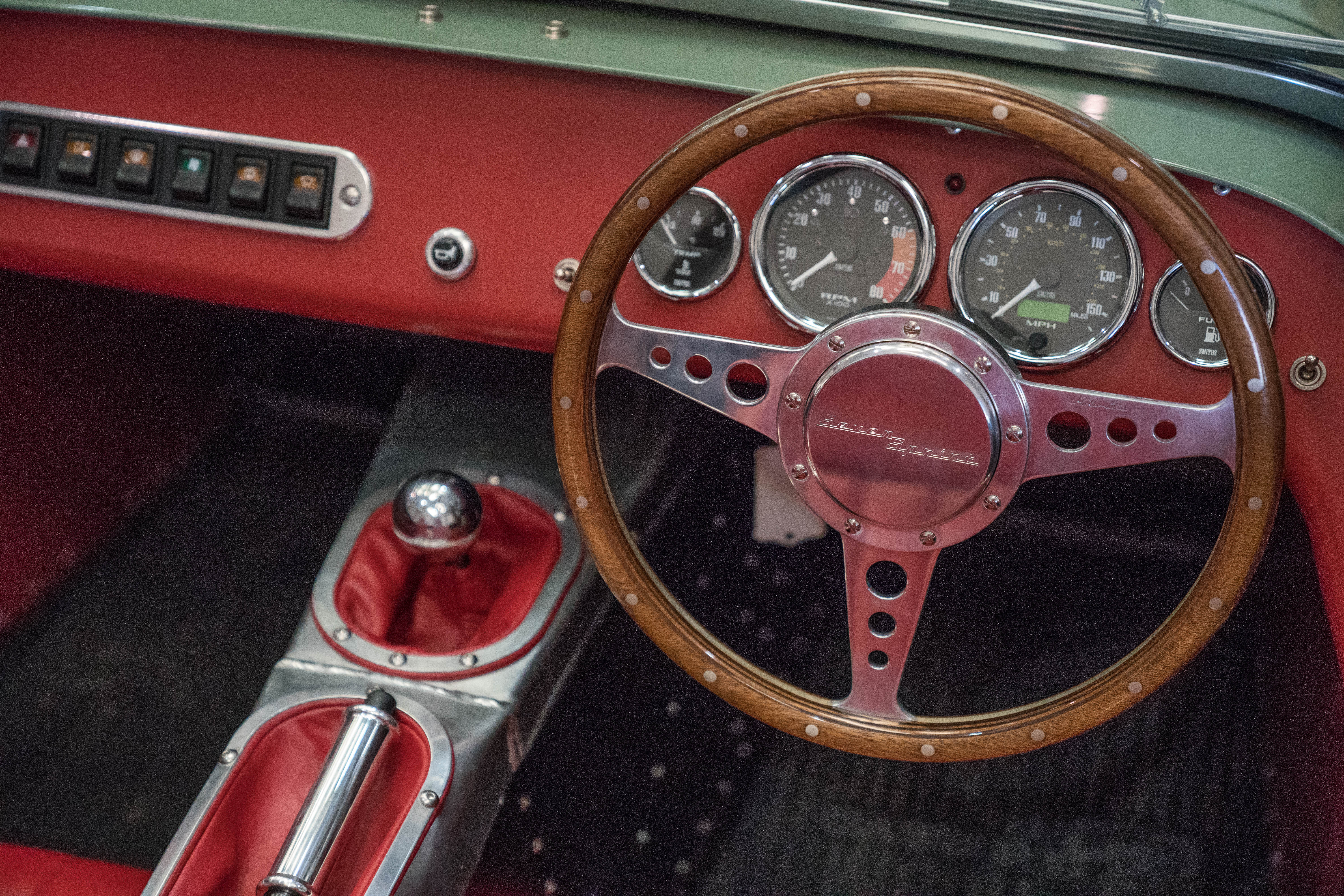
The Alpha A9 also holds its own against its rivals when it comes to high-ISO performance. Looking at JPEG files, even at ISO12,800 results look very good; there's a slight hint of luminance (grain-like) noise, but, while detail has been compromised, the overall result is perfectly useable. Raw files at the same sensitivity see some chroma (color) noise appear, but detail is that bit better, and you have the option to apply noise reduction to taste in post-processing.
All told it's very impressive, and while the A9 doesn't quite eclipse the high-ISO performance of our low-light king, the D5, you have to really pixel-peep to see the differences.
The A9's dynamic range performance, while not quite a match for that of the A7R II, is still broad enough in the real world to enable you to recover a decent amount of highlight detail from raw files. It also copes well with shadows – we found that we could happily drag the Shadows slider in Adobe Camera Raw a good way to the right without the image deteriorating.
Verdict
The Sony Alpha A9 is a phenomenal camera. It's not without its faults – we'll be interested to see how the weather-sealing holds up when it's properly exposed to the elements for starters, while the absence of XQD card slots and very limited touchscreen control is disappointing.
Those issues aside, however, the Alpha A9 doesn't fail to impress. The autofocus system Sony has blessed the A9 with is not only incredibly quick, but the tracking performance has to be seen to be believed.
Partner that with a incredibly rapid 20fps burst shooting speed, and a large and bright EVF that doesn't black out when you're shooting, and you've got a camera that'll mix it with the best that Canon and Nikon has to offer when it comes to shooting sports and other fast-paced action.
Our only slight reservation about whether the Alpha A9 can succeed in this area is not the camera, but the lens support. While photographers shooting with Canon and Nikon DSLRs have a plethora of long lenses to choose from, the Alpha A9 is limited to a single (variable aperture) dedicated zoom lens with a reach beyond 200mm.
Just as Sony is rolling out a series of dedicated pro service centres to meet the demands of professionals, we hope to see similar efforts result in some new fast telephoto optics to support this fabulous camera.